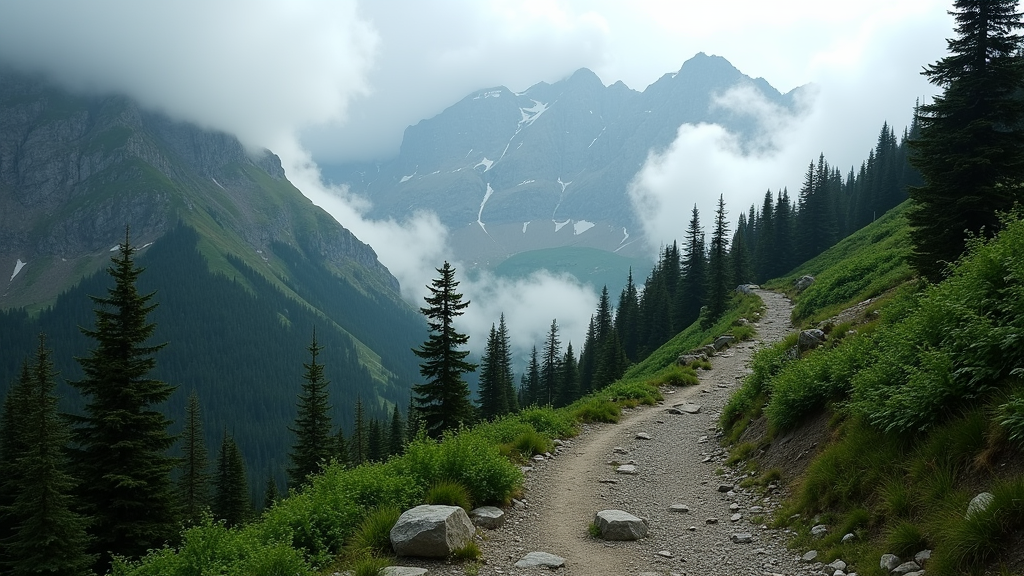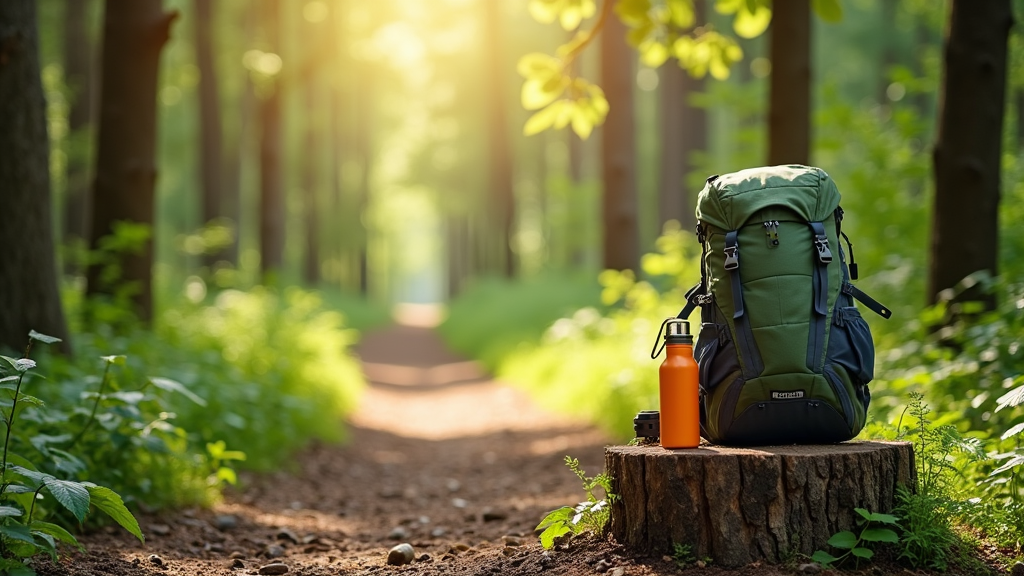Want to go farther, climb higher, and stay safer on the trail? Start with these essential hiking and trekking tips.
Hiking and trekking have always given me a sense of adventure and peace. Tackling rugged trails and breathing in fresh mountain air is deeply satisfying, but staying safe and making it to the finish line with enough energy left in the tank takes more than just enthusiasm.
Knowing how to boost endurance and follow smart safety tips truly makes the difference. Here, I’m laying out everything you need to know for confident, enjoyable, and safe adventures, whether you’re just starting out or looking to take longer journeys.

Essential Safety and Endurance Gear for Hikers and Trekkers
Your gear plays a huge role in how prepared and safe you’ll feel on the trails. Having reliable equipment isn’t just about comfort; it keeps you going when the terrain gets tough or the weather takes a sudden turn. Here’s what to always carry on longer hikes and treks:
- Comfortable Footwear: Sturdy hiking boots or trekking shoes with solid grip and ankle support keep blisters and rolled ankles at bay.
- Weather Appropriate Clothing: Moisture wicking layers, breathable shirts, and a waterproof jacket. Weather can shift quickly, especially in the mountains.
- Backpack with Proper Support: Look for one with a padded waist belt, multiple compartments, and space for a hydration system. Make sure its water proof.
- Navigation Tools: Maps, compass, or a GPS device. It won’t hurt to also bring a fully charged phone loaded with offline maps and a solar powered power bank.
- Basic First Aid Kit: Bandages, antiseptic wipes, pain relievers, blister pads, and tweezers. Having little more in the kit would be good too.
- Hydration and Filtration: Water bottles, a water bladder, plus a filter or purification tablets for longer trips.
- Sun Protection: Sunscreen, sunglasses, and a brimmed hat are always handy, no matter the forecast.
- Emergency Gear: Whistle, headlamp (with spare batteries), emergency blanket, and a multitool.
This hiking essentials checklist keeps you ready for most situations you’ll meet out there. For more details, you can always check REI’s day hiking checklist before you leave home. Nowadays, having your gear dialled in can mean the difference between pushing ahead and cutting a trip short, so take some time to track down new innovations or trail-tested favourites from seasoned hikers.
Starting Out: Safety and Preparation for Beginners
When you’re new to hiking and trekking, excitement can sometimes make it tempting to jump onto challenging routes early I understand that, but trust me starting slow and learning key techniques is the way to go.
It helps you build up the fitness, skills, and confidence and endurance you need all while staying safe. These tips help with both endurance and safety for beginners:
- Start Working out: If you want to hike/trek fairly regularly or more, You need to build up your strength, endurance & stamina (I’ll share details below)
- Pick Well Established Trails: Stick to popular or marked paths. It makes navigation simpler, and there’s more chance of meeting other hikers.
- Don’t Go Alone (At First): Bringing a friend or joining a local hiking group is a good way to ease nerves and share the experience. You’ll also gain unexpected knowledge and make friends this way.
- Tell Someone Your Plans: Always share your route and estimated return time with someone who’s not on the hike.
- Check the Weather Beforehand: Mountain and forest weather can mix up fast. If storms or high temperatures are likely, consider rescheduling.
- Pace Yourself: Start at a steady, comfortable speed. Rushing uses up energy fast, leaving you tired later on.
- Practice ‘Leave No Trace’: Packing out what you bring and respecting wildlife keeps trails beautiful and open for everyone.
Following these basics helps you avoid the most common slip ups, since small mistakes can even snowball into big safety hazards in no time. If you want to track down local info and route recommendations, chat with park rangers or experienced hikers in the area—they often have great advice.
Building Endurance: Training, Fitness, and Stamina Tips
I used to think hiking fitness was all about just going on more hikes. Turns out, a little targeted training goes a long way in building stamina, strength and endurance. Here’s how to keep your legs and lungs in hiking shape year-round while making the most of off trail days:
Hiking and Trekking Endurance Training
- Cardio Workouts: Activities like incline walking/jogging/running, cycling and swimming give your heart and lungs a boost.
- Stair or Hill Practice: Walking up real hills or using staircases mimics trail conditions. add a loaded backpack for bonus points(of course you can just add anything with weight, don’t pack a proper hiking bag🤣).
- Total-Body Compound Movements and strength exercises: Exercises like deadlifts, lunges, squats, planks, and shoulder and bench press, pull-ups/Lat pulldowns, farmers carriers and calf raises will build strength and improve cardiovascular endurance when done in circuits, supersets or with minimal rest. (Always remember to stretch a little before and after your workouts to warm up/ cool down and prevent injuries.
- Flexibility and Balance: Yoga or simple stretching routines prevent injuries and keep you nimble over rocks and roots.
For longer hikes or multiday treks, gradually increase both distance and pack weight during training hikes. Remember, rest and recovery are extremely important—your muscles get stronger when you give them a chance to rebuild. Plus, don’t overlook adding variety: swapping in strength days, yoga, or brisk walks keeps things fun and boosts overall fitness.
Techniques for Safer and Smoother Hiking
Learning a few smart hiking strategies will make rough terrain or long days feel much easier on the body. Here are some techniques used by experienced hikers and local guides:
- Keep Your Centre of Gravity Low: Shorter steps, slight bends at the knees, and keeping your torso upright help with balance.
- Sticks & Poles Are Your Friends: Trekking poles/sticks reduce impact on your knees and add stability on tricky slopes or stream crossings.
- Steady Breathing Pattern: Match your breath to your steps (inhale on two steps, exhale on two) to keep from getting winded quickly.
- Rest Before You’re Exhausted: Taking short, regular breaks keeps energy up more effectively than stopping only when wiped out.
- Nutrition Matters: Snack on small bites of carbs and protein every hour to avoid sudden energy crashes. pack things like a trail mix, dried fruit, protein bars and nut butter pouches.
On technical trails or rocky paths, being able to spot secure footholds and plan a few steps ahead helps a ton in avoiding slips. Try to check out educational workshops or local classes if you want to give your trail technique a real boost.

Prepping for Longer Treks and Multi-Day Hikes
If you’re aiming to tackle a long distance trail, extra planning goes a long way. Here’s what to do to get ready for those bigger challenges:
- Plan Your Daily Mileage Realistically: Don’t overestimate how far you’ll comfortably walk in a day, especially on unfamiliar ground.
- Study the Route: Know where water sources, campsites, and possible exit points are. Download maps offline just in case.
- Pack Light, But Smart: On longer treks, keeping base weight low helps a ton, but never skip safety essentials.
- Break in Your Gear: Give new boots or a backpack a few short hikes before relying on them for days at a time.
- Mental Prep Is Key: Endurance on tough days depends as much on attitude as on fitness. Mentally rehearse overcoming obstacles to stay positive when things get tough.
You’ll also need a few extra items for overnight safety, like a good sleeping system and a lightweight stove if you plan to cook. REI’s backpacking checklist Can really help. For greater comfort, mix in familiar foods or a favourite camp treat to keep spirits high.
Advanced Endurance and Safety Tips (For When You’re Ready to Take It Up a Notch)
After you get comfortable on challenging hikes, a few advanced tricks can make your endurance and safety game even stronger. Here are some tips expert tips:
Train with Intervals: Mix short bursts of up-tempo hiking or running with slower recovery walks. This boosts heart rate recovery and trail stamina.
Strengthen Feet and Ankles: Calf raises and walking barefoot on soft ground help reduce injury risk from slips or uneven terrain.
Use Altitude Acclimatization: If you’re heading above 8,000 feet, spend extra nights at higher elevations before your main trek. Headaches and fatigue disappear faster when your body adapts gradually.
Emergency Skills: Brush up on basic first aid (like treating blisters, cuts, sprains, or dehydration) and map reading without a phone, just in case your gear fails and always carry a compass(learn how to use one properly too).
These habits not only boost your performance; they also make the trails safer for you and your hiking buddies. Want to add more challenge? Try alpine hikes, volunteer for trail clean-ups, or take a wilderness first aid class to up your skills. Being prepared and staying curious keeps every adventure fresh.

Frequently Asked Questions
What’s the best way to start endurance training for hiking?
Start adding short hikes with slight elevation. Gradually increase the distance and add in leg and core exercises at home or at the gym to support those muscles you’ll use the most.
How can I stay safe while hiking solo?
Let someone know your plan, stick to marked trails, pack an emergency whistle or beacon, and regularly check in by phone if you have service. Avoid solo hikes on difficult or remote routes until you’ve got plenty of experience.
What type of snacks are good for maintaining energy on the trail?
Mix it up with carbs, protein, and a little fat. I like peanut butter sandwiches, jerky, dried bananas, trail mix, protein bars and energy chews for quick boosts.
How do I deal with bad weather during a hike?
Watch for cloud build up and changing winds. Always carry rain gear and an extra dry layer. If thunder or lightning rolls in, move away from exposed areas and seek lower ground or some shelter if possible (best is to keep some spots in mind that you see along your way that could be used for shelter if needed).
Final Thoughts
Confident hiking and trekking come down to smart planning, good gear, steady fitness training, and keeping safety a top priority.
Building these habits turns every hike, short or long, into a rewarding, energizing adventure. Keep learning , stay curious, and your experiences will get better and better each trail you challenge.
At Adventure Nirvana, I believe every step into the wild is a step into your best self. So lace up, gear up, and trek smarter — the mountains are calling.
